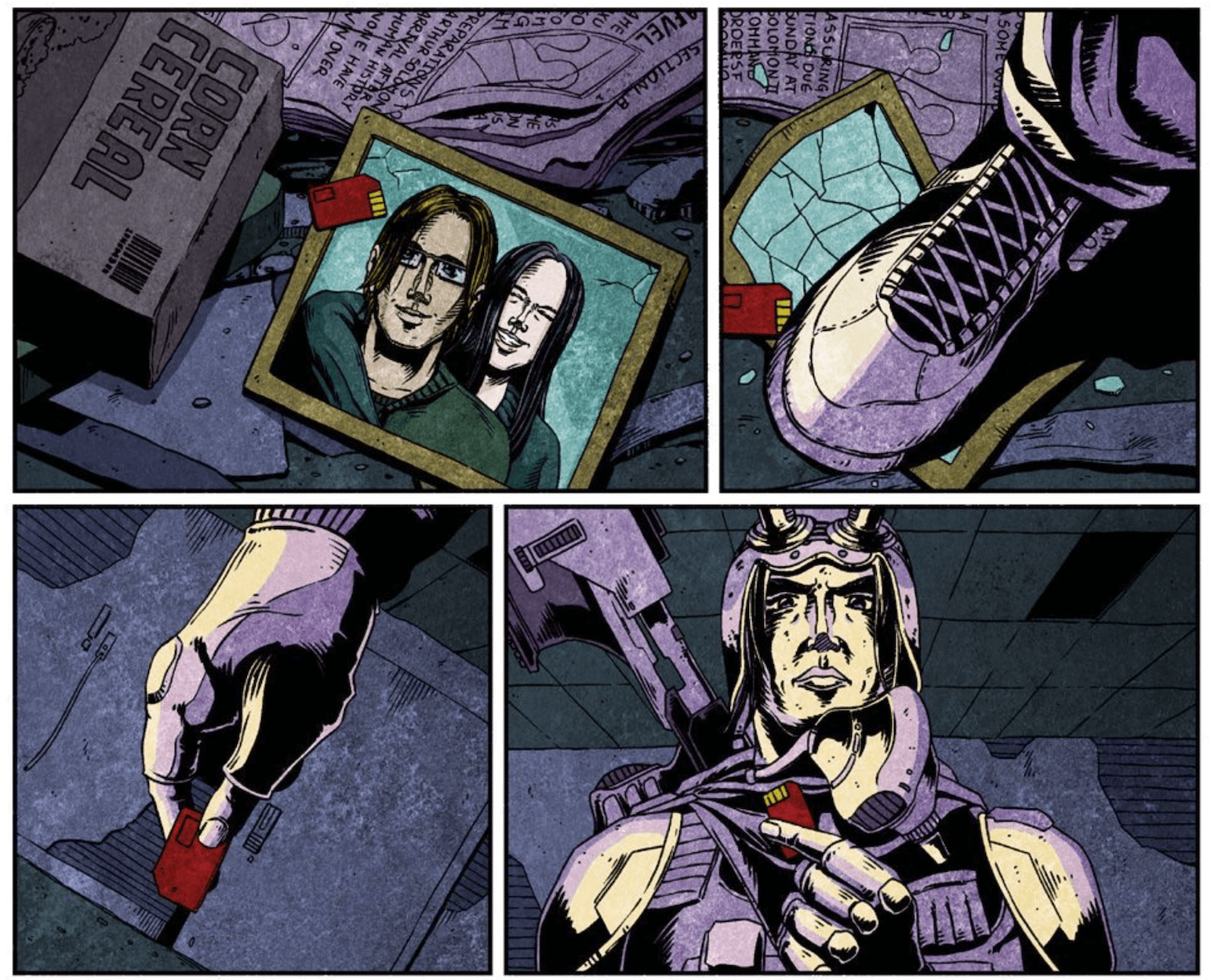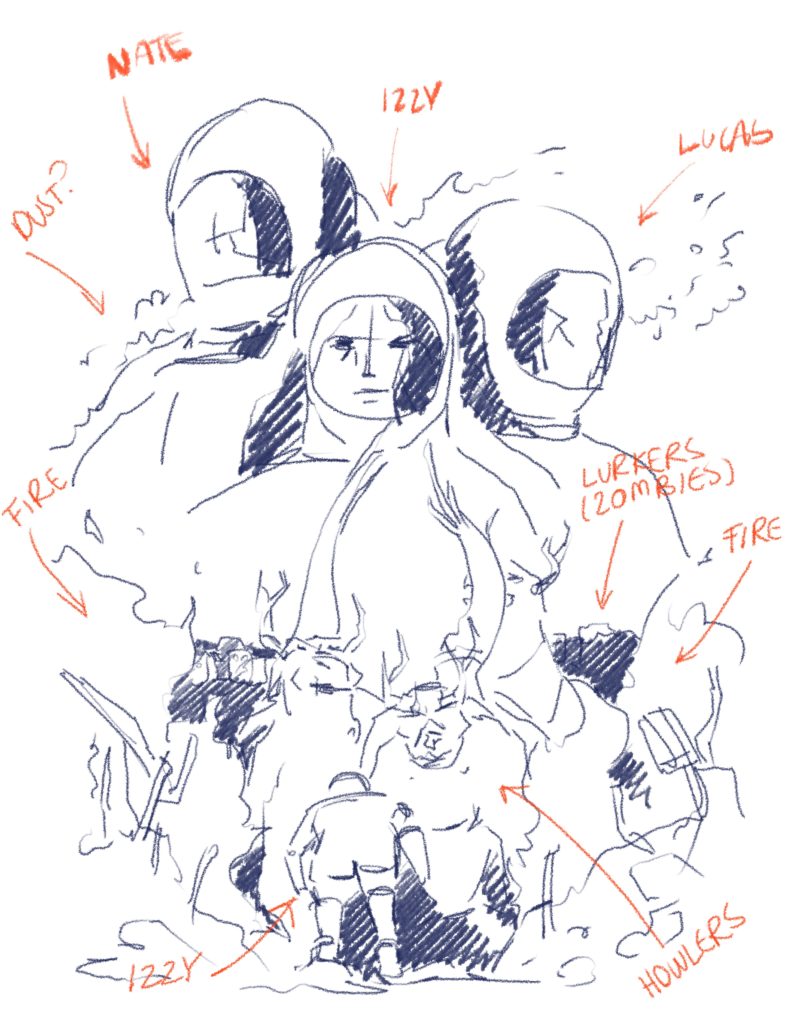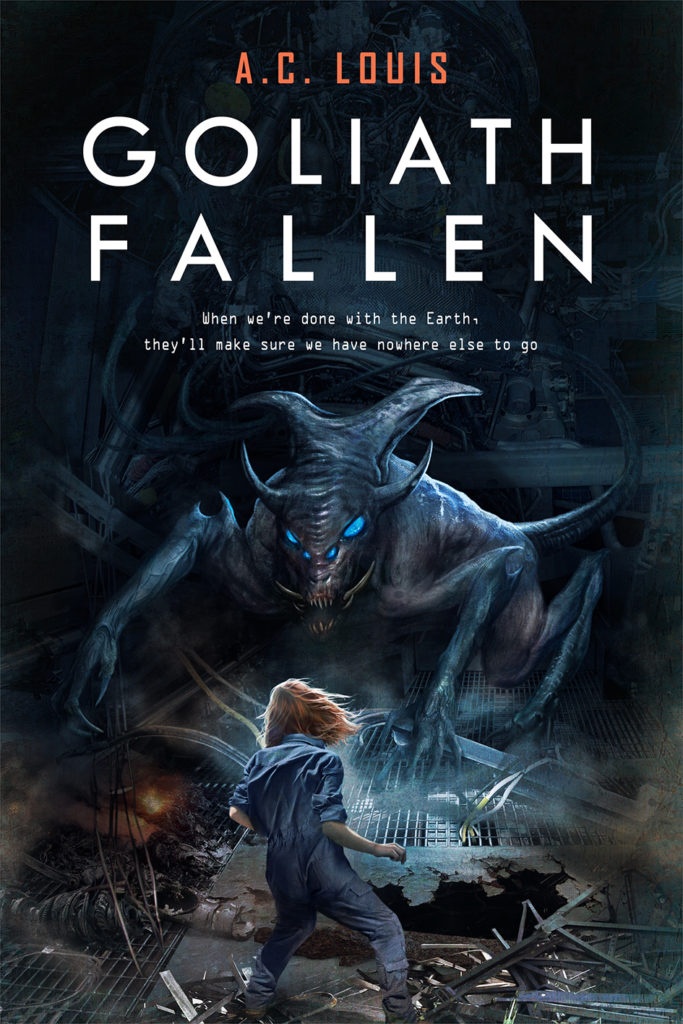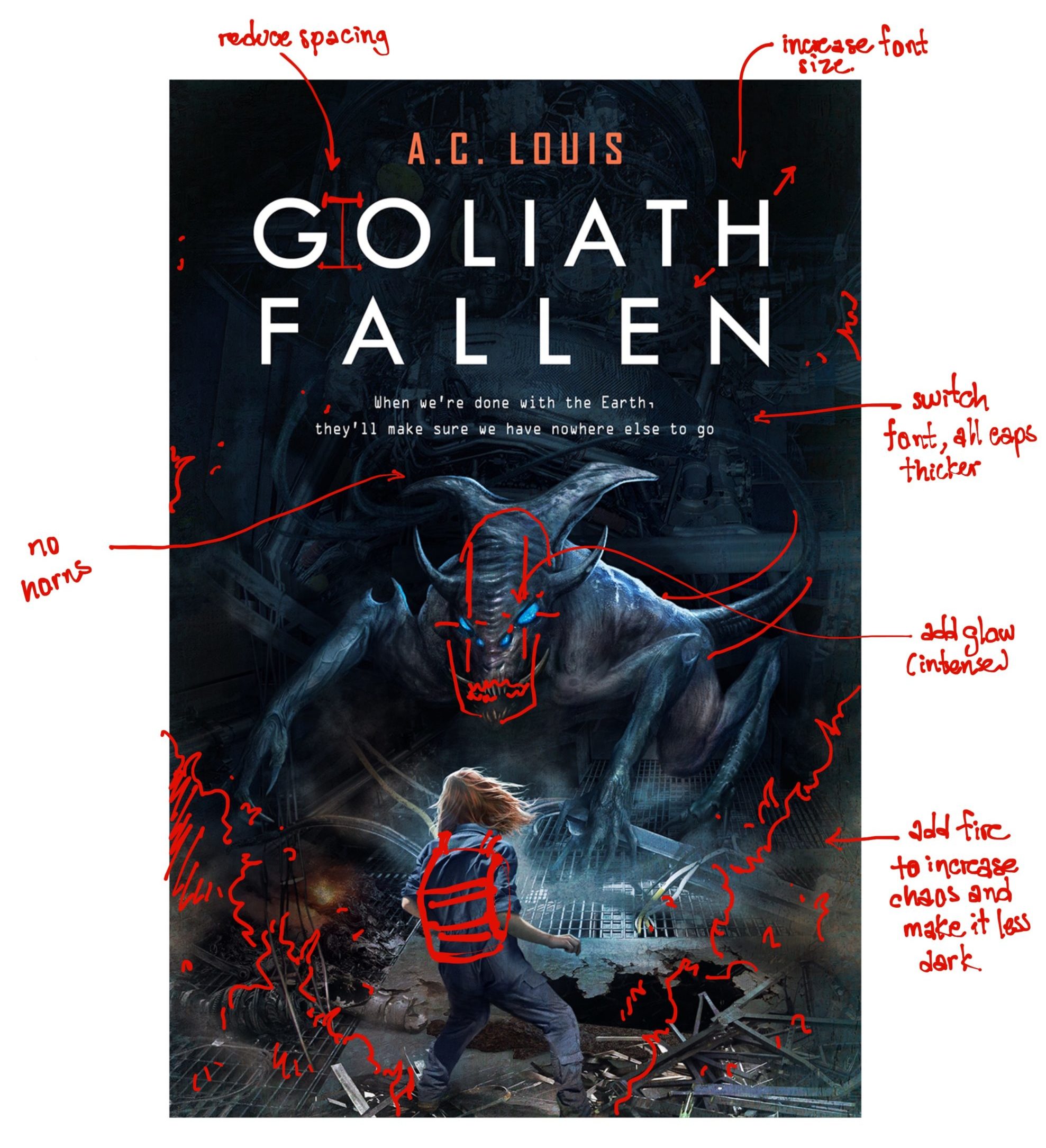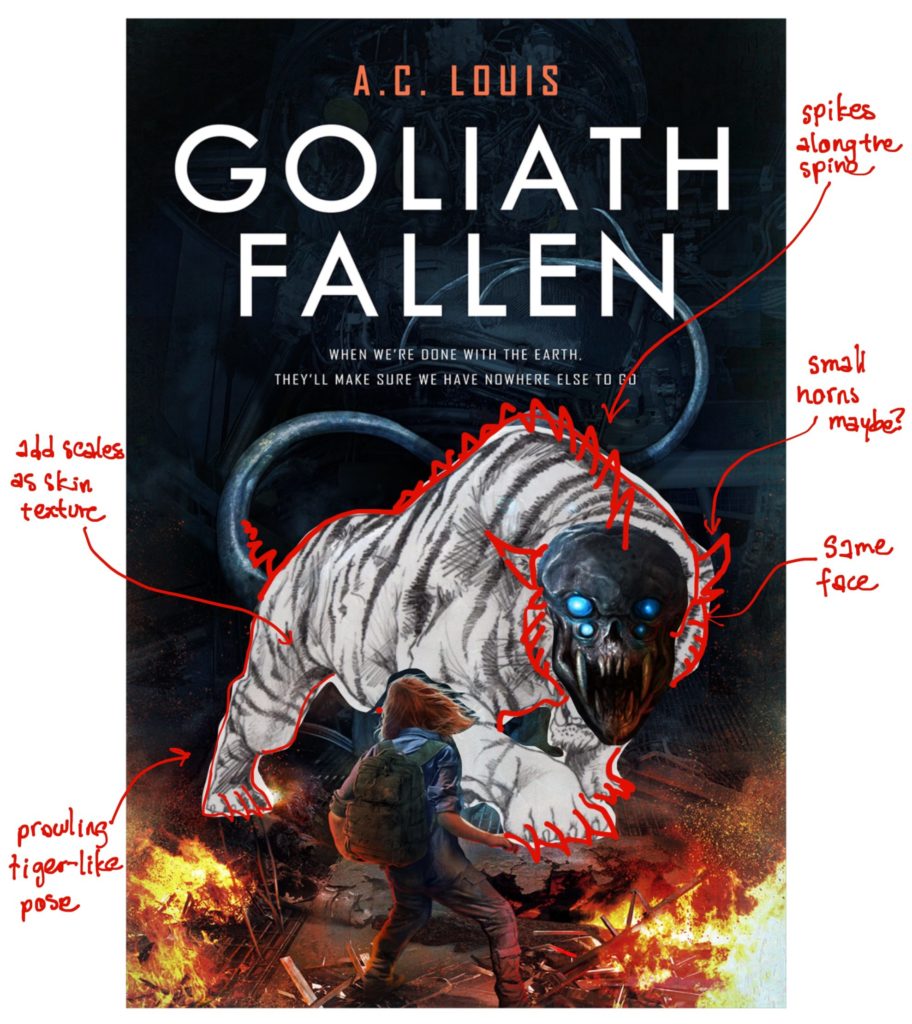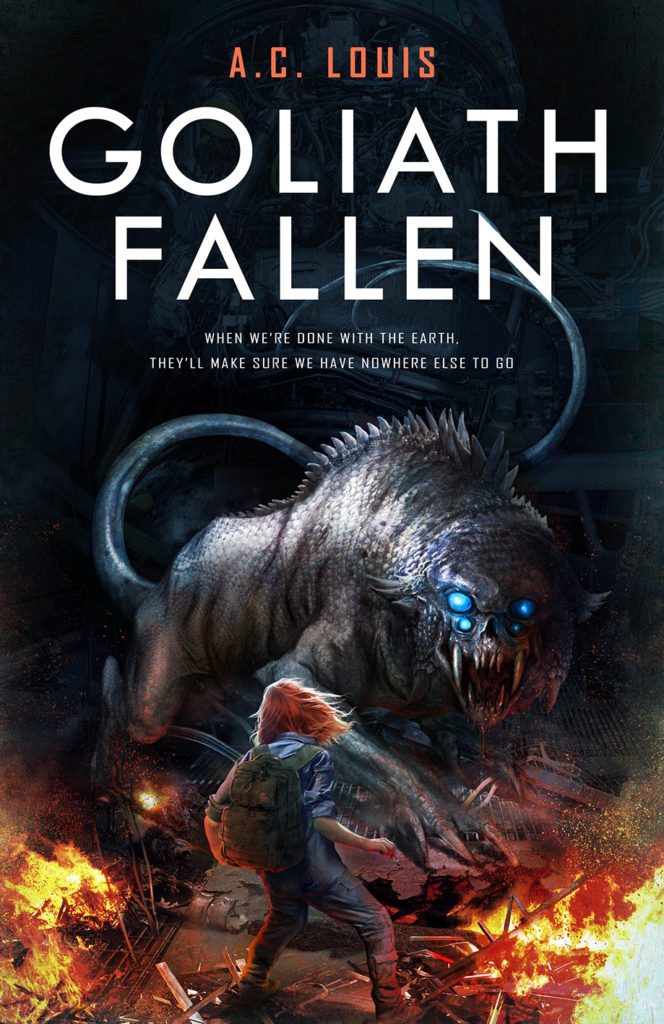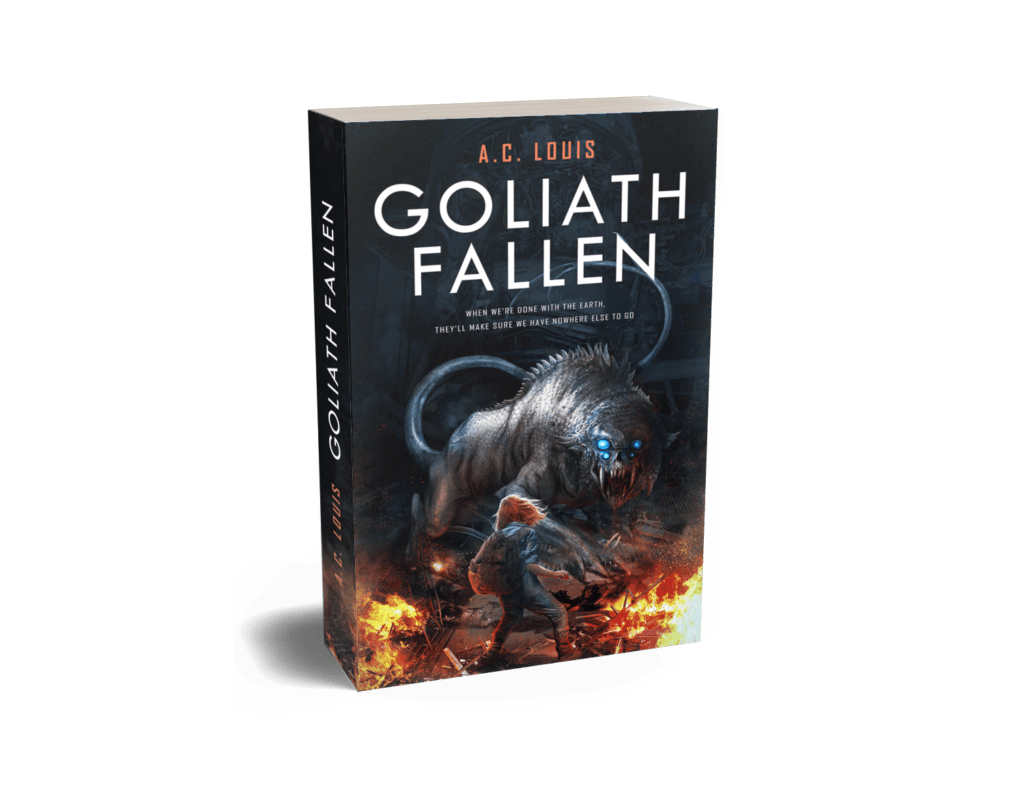My debut novel, GOLIATH FALLEN, has gone through several phases during its long, long development history. Perhaps the most prominent one was the time I ditched the book outright and tried making a graphic novel instead. What triggered such a drastic measure? Honestly, burnout was a big part of it. Writing became a lonely and slow endeavor, and I was growing more and more desperate to finally get the book published.
This fatigue apparently led me to be open to new ideas. The idea of a graphic novel actually stemmed from external feedback. A common refrain from my critique partners was that my narrative style was very “visual.” That was the true catalyst.
The idea was simple: if my narrative style is so visual, it should easily translate to a graphic novel. Creating it should also be easier, quicker, and more serializable than an actual novel. Truthfully, I’m still struggling to comprehend how such an idea sounded even remotely reasonable at some point.
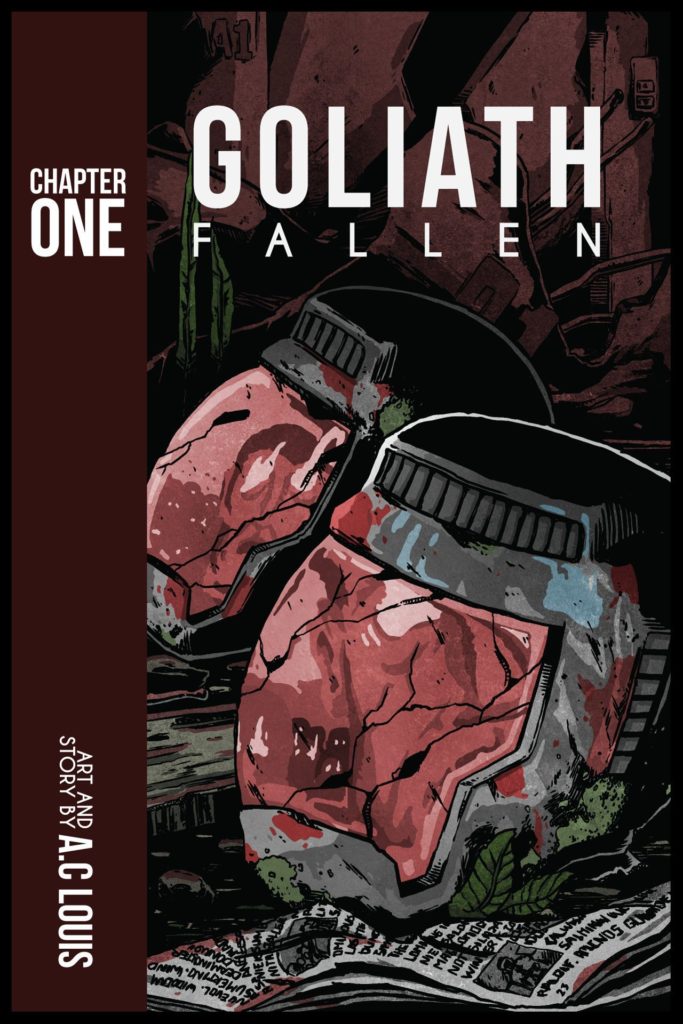
Needless to say, it failed spectacularly. I lacked the experience, manpower, discipline, and willpower to see it through. Sure, I didn’t have to write thousands of words per chapter (I could just illustrate things). But, I still had to write a script and assume other roles like drawing, lettering, and formatting. I gave up on the endeavor about two issues and sixty pages in.
It was a long and winding road of rubble I walked barefoot through until finally realizing that the workload would end up killing me. And that’s no joke—my health notably declined due to lack of sleep, poor nutrition, and a horrible work-life balance. If anything, this experience only cemented my respect for professional comic book artists. It amazes me that someone can deliver 30-page issues (or even 120-page tomes in the case of manga) in the span of a mere month.
While grueling, the project wasn’t fruitless. I learned a ton during that year, and I think some of my insights are worth sharing. So, here I bring you my top five lessons learned from trying (and failing) at making a graphic novel.
1. Ensure the script is finished
Graphic novels (and comic books) follow a script. We don’t just sit down to draw panels without a clear guide of what’s going to happen. Improvising a graphic novel is buying ourselves a ticket to Pain City at a discount. And that’s if we’re working alone. If we have an artist, they’ll probably laugh in our face.
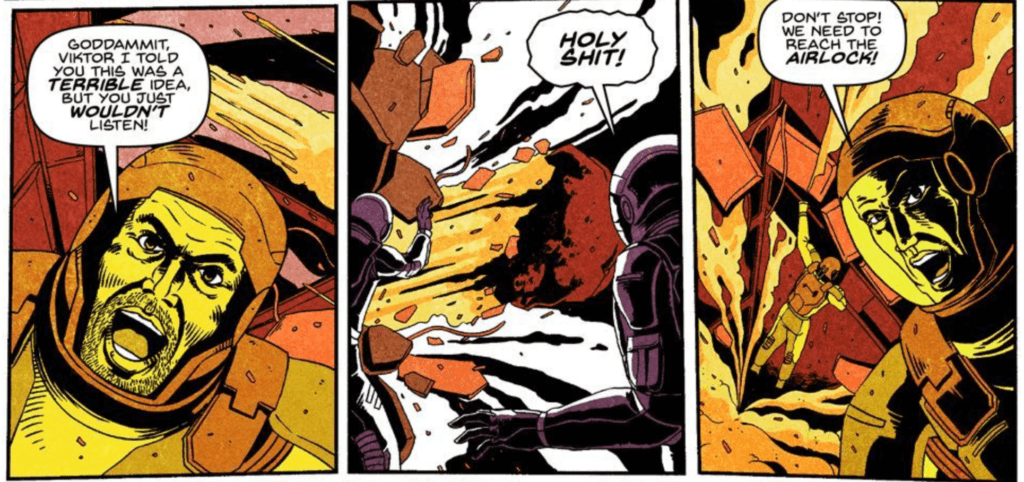
Like it or not, every good graphic novel starts with a finished written script. And when I say “finished,” I mean finished. That includes editing, revising, proofreading, and everything else involved in publishing an actual book. This is critical because if changes are made later on, that means we’ll have to redraw entire pages. If we’re several pages in, a change at the beginning of the script means we’ll have to throw the entire issue in the garbage and start over.
Trust me—you don’t want to be in that position.
I was but a rookie the first time I marked my script “ready to go.” In reality, it was far from it. Redrawing 30 pages is no joke. Plan to spend a reasonable amount of time on the script so that it’s airtight once the drawing starts. I know this is especially hard as writers tend to get stuck in editing and rewriting. Take your time, but just remember: the drawing starts when the writing stops. In terms of budgeting, redrawing pages ourselves will only cost us time (and years off our life expectancy). If we’re working with an artist for hire, however, redraws will drain our budget in a snap.
2. Keep the art style simple
Whether we’re self-publishing or working with a traditional house, we’ll always be on a schedule. We might even be under a contract to meet certain deadlines. As for me, I was self-publishing my novel as a webcomic and releasing pages twice a week.
Building a sustained readership and attracting organic traffic to a webcomic is a lot of work. And those eyeballs can be gone in a flash if the schedule isn’t closely followed. Internet readers in particular take this very seriously. If you’re not sufficiently feeding their content diet when they expect it, they’ll move on to one of the thousands of other webcomics. In the traditional world, missing deadlines could be even more consequential (and may even result in a breach of contract).
Complex, intricate art takes time. To optimize efficiency and meet deadlines (self-imposed or otherwise), it’s best to stick with a simple art style. The style I employed in the graphic novel version of Goliath Fallen was inspired by Dave Gibbon’s Watchmen illustrations (and classic American comic books in general). And while I loved Gibbon’s style, I hadn’t counted on it dooming my project.
It was simply too elaborate, and my output was at most two six-to-eight-panel pages a week. Two pages a week! And it heavily depended on the complexity of the scenes and backgrounds. Even if I released the pages as comic strips, I was still churning out too little content for a whole seven days. At that rate, I’d be lucky to finish by my seventieth birthday (not really, but you get the idea).
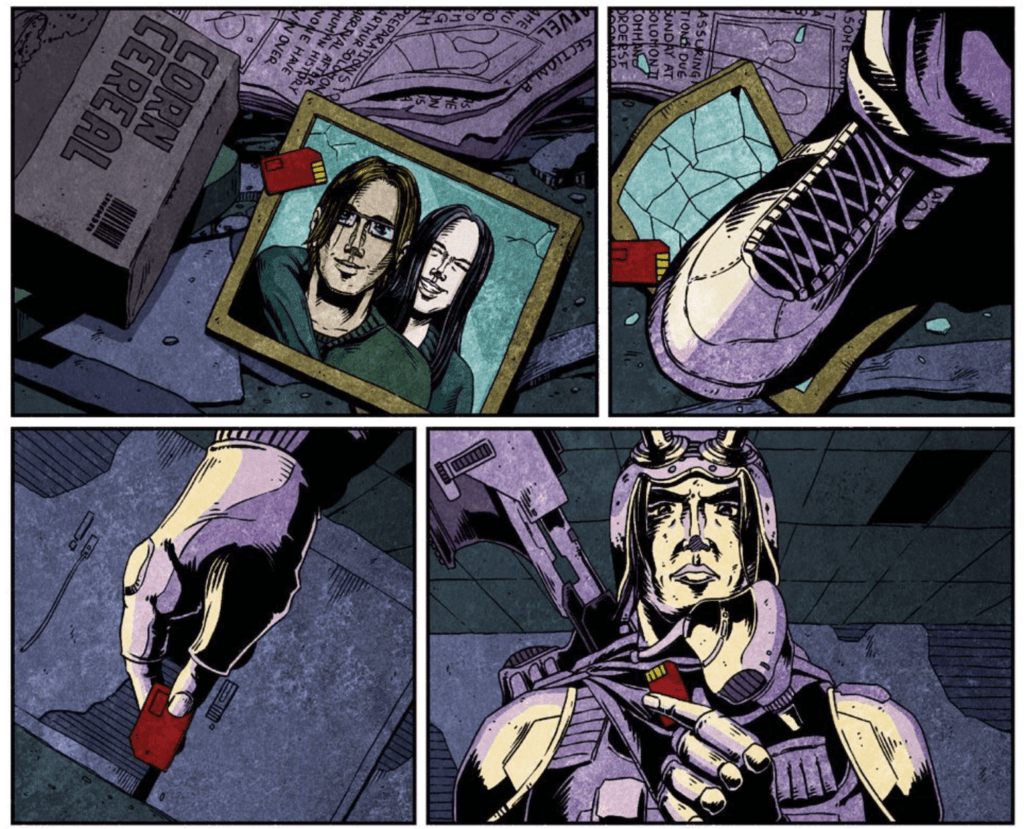
Remember, it doesn’t matter if it takes a week to draw a page. No matter how much detail or effort is put into it, it will be read in seconds by readers.
The truth of the matter is that the art style of our graphic novel isn’t even that important. One Punch Man’s original webcomic looked like doodles on a napkin, and yet it still launched into the stratosphere and garnered a seismic following. It was later remastered into the manga we know and love today. The art style didn’t have to be a masterpiece of contemporary art; it only had to be good enough to transmit the story effectively. Meanwhile, the graphic novel version of Goliath Fallen had a kickass art style (if I do say so myself), but it was so hard to produce that I couldn’t keep up. I was working practically 24/7 to produce just two pages a week, which was simply absurd.
After I quit the project, I read Scott McCloud’s Making Comics (an essential read), in which he covers this exact issue in depth. If I had a time machine, I would go back and read that book before I even considered the idea of a graphic novel in the first place.
3. Prepare a content buffer
Possibly the biggest mistake I made when making a graphic novel was not having a content buffer. I published pages as I finished them. But, I was averaging one or two pages a week, so that should be fine, right? Most definitely not. If life got in the way (and it always does), that meant that I didn’t have anything to post, and I’d miss my upload days. Taking a few days off when I was starting to feel burned out was completely out of the question. My readers were counting on me, and they wanted to know what was next in the story.
After missing a deadline, the only way to catch up is to simply find the time and work the nights away. If we don’t make time, work will accumulate until we don’t have a life anymore. We’ll remain prisoners of our own creation (as dramatic as that might sound).

The key takeaway here is to always be ahead of schedule. Retain three months of content as a buffer if possible. With that much of a buffer, we should be able to consistently meet our update days even when life gets in the way. The amount of prepared content we’ll need will always depend on the type of graphic novel we’re making. Just make sure you have enough content to keep your schedule steady should the apocalypse come tomorrow.
4. Don’t go solo; work with a team
The graphic novel version of Goliath Fallen was produced by a team of one. I spent an entire year working all by myself outlining, scripting, penciling, inking, lettering, formatting, and who knows what else. It was an insurmountable amount of work, and, admittedly, I shouldn’t have gone at it alone. This was the second key mistake (along with my rather intricate art style) that ended up dooming my graphic novel.
If resources allow, never go solo. While I can draw, I should’ve teamed up with an artist to do that part for me. That would’ve given me collective months of my time back to allow me to focus more on writing. Don’t bite off more than you can chew. While that’s very cliché advice, it’s nonetheless true.
For natural-born illustrators, relinquishing control over the design process can be tough. There’s a certain pride in seeing our illustrations in the graphic novel that carries our name. So while outsourcing may mean that we might not get the glory all to ourselves, it at least gives us the confidence to know that we have the time to get the work done and finish our graphic novel. The glory will only come if the project is actually finished and released to the world.

Even just having another individual to pass ideas by is itself supremely valuable. We’re more likely to wind up with a better end product just by receiving this feedback early on in the process of writing a graphic novel. My stubbornness, unfortunately, got the best of me, and I just did everything myself. Don’t make the same mistake I did.
If budget is a concern, there are some alternative approaches you can try. Some graphic novel authors have found success in offering to bring on illustrators as co-authors and share royalties if it ends up being a hit. Many comic book projects work this way. You could also just hire someone to take your sketches and colorize them (instead of paying them to illustrate from start to finish). At the very least, a solid team should be comprised of both a writer and an artist.
5. Master your tools
The tools we use to create our graphic novel (writing, drawing, lettering, etc.) should be exactly that—tools. They’re meant to make our lives easier, not the other way around. Sure, we can buy expensive programs such as Adobe Creative Cloud at a whopping $30–50 per month, but if we don’t know how to use them, they’ll only serve to hinder our graphic novel process. It’s essential that by the time we commit to a plan, we know our tools well. It’s worthwhile to spend time learning them.
I’m not saying that it’s imperative to know every single shortcut there is. That’s not reasonable. Aim for a skillset where you at least feel comfortable and in control. Less time spent trying to configure digital inks means more time available to actually work on our graphic novels.
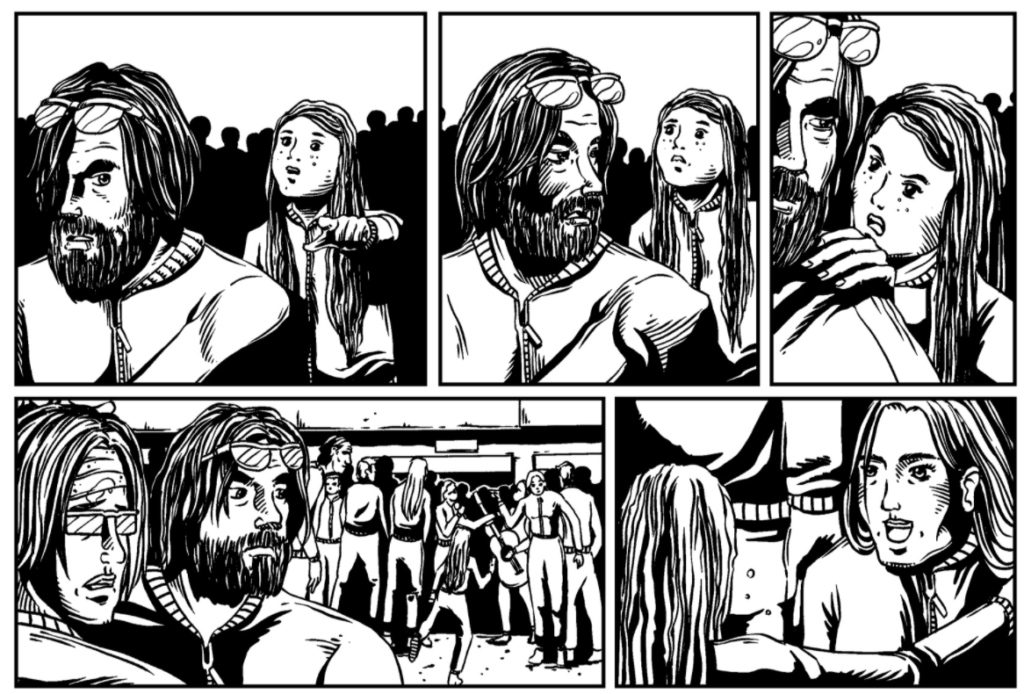
Before diving into online tutorials and cheat sheets, start by making a list of the tools you’ll need. These can include programs for drawing, lettering, and publishing. In my case, it was Clip Studio Paint (drawing), Adobe Illustrator (lettering), and InDesign (publishing). Once we have our suite established, then we can start the learning process. There are a number of useful programs out there, including Skillshare and YouTube videos that are surprisingly comprehensive. Don’t wait until you’re on a tight deadline to start reading through forums on how to blur colors or resize an artboard (like I did).
Final thoughts
My own year-long graphic novel journey was one of the most frustrating periods of my professional life. Over that time, I learned there’s a true art in making a graphic novel—and I’m not just referring to the drawings inside. Drafting a script ahead of time, selecting the right art style, preparing a content buffer, working with a team, and mastering the tools of the trade are just a few considerations to ensure a more seamless and successful project.
Although the graphic novel version of Goliath Fallen doesn’t exist in its entirety today, the process was insightful and rewarding. It also forced me to reckon with my personal weaknesses as an author and illustrator. It is my hope that my unfiltered perspective here doesn’t discourage you. I just want you to avoid the same mistakes I did and start off your own graphic novel journey on the right foot. I can attest to the joy of seeing the finished pages of my own graphic novel come together.
Given that this project accounted for a whole year of intensive work, I have quite a bit to talk about. I’m considering writing more about the experience. Let me know what you think. Would you like to hear the whole story?
Get Two Books for Free
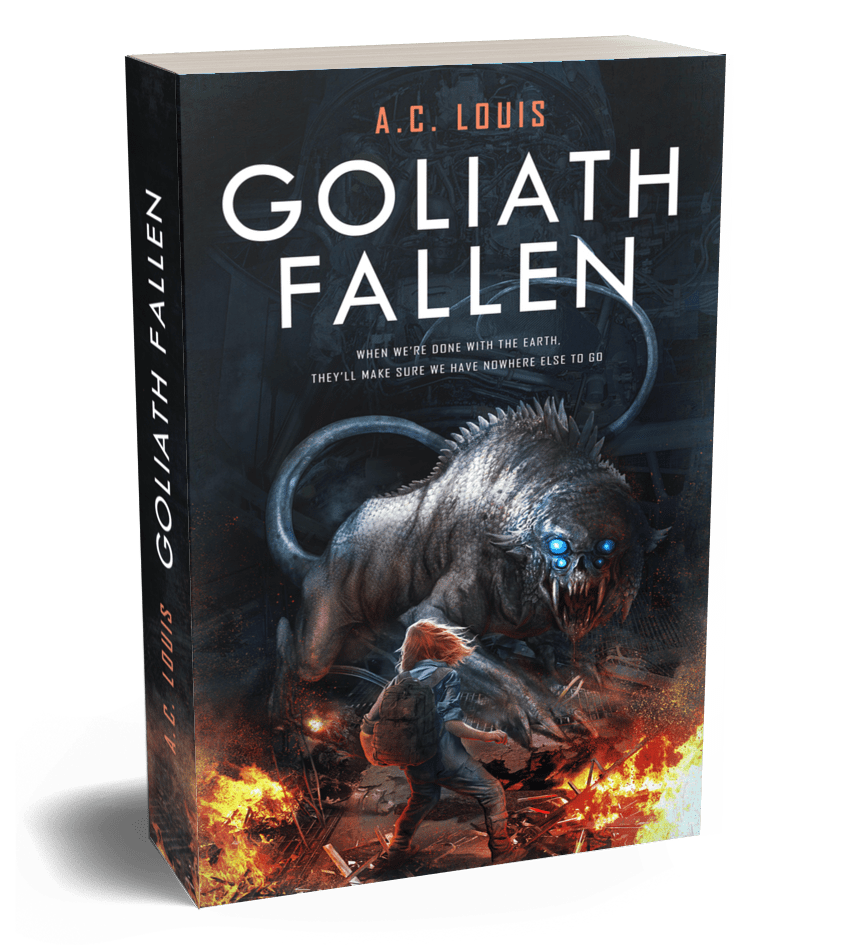
Get a preview of my sci-fi thriller, Goliath Fallen, by joining my exclusive mailing list for access to sales and giveaways. And don’t worry, I dislike spam as much as you do so don’t expect any from me. You can unsubscribe at any time.
